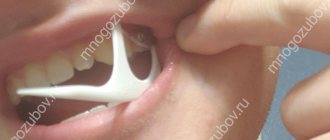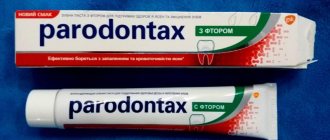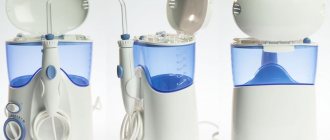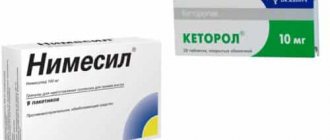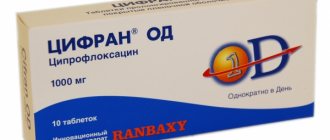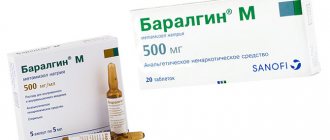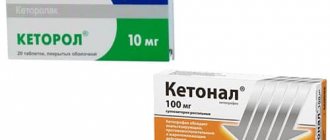Without making a knot, we pinch the end of the thread in another cut on the cardboard. Then we start waxing the thread. To do this, you need to soften the wax a little in the palm of your hand or move it several times with quick movements over the flame of a lighter. Generously rub the winding on the cardboard on both sides with soft wax.
Next, heat the iron. On the surface for ironing, spread a newspaper in several layers, then an A4 sheet or tracing paper, on which we place a cardboard with threads, again an A4 sheet on top or cover it with tracing paper, you can cover it with another newspaper on top so as not to stain the iron with wax, but because... I have a working iron, I’m not afraid of getting it dirty. Let's start ironing. Do not leave the iron in one place for a long time; check the threads to see if the wax is melting. If there is an unpleasant smell of burnt plastic, it means the stove is too hot, and the threads can melt. The wax should all melt, the threads should be saturated with wax and be smooth to the touch, not greasy from the wax, as with regular waxing! Don't forget to turn the cardboard over and iron the threads on the other side, as well as on the bend along the edges of the cardboard!
Let the threads cool, then begin to unwind the threads from the cardboard, starting from the end without a knot. We wind the thread back onto the original spool.
What is dental floss used for?
Floss easily copes with the difficult task of cleaning the interdental spaces. This hygiene product is especially recommended for people with crowded teeth and those undergoing treatment with braces. Timely removal of residues prevents the development of caries and gum disease. Many people believe that a toothpick is sufficient for this purpose. Dentists have a unanimous opinion on this matter: a toothpick, unlike floss, only harms the teeth.
Lanshina Natalya Viktorovna
hygienist at pediatric dentistry “Zubrenok”
The difference between dental floss and a toothpick is fundamental. Properly selected dental floss, when used correctly, removes plaque and food debris from the interdental spaces and does not injure the oral mucosa and the ligaments that hold the tooth in the bone. This is a means of dental care, prevention of caries and periodontal diseases. A toothpick is used to remove food stuck between teeth, in cavities, or under the gum. It injures the gums and ligaments of the tooth, leaving microbial plaque intact. People who use a toothpick have some kind of unresolved dental problem, a chronic disease in the oral cavity that requires emergency dental care
Scope of application
Dental floss is a useful replacement for a toothpick. If a wooden stick often gets stuck, leaves splinters and even injures the enamel, then floss is recommended by dentists as an effective and safe method of hygiene. They need to be treated before bed to prevent bacteria from having a nightly feast and ruining your smile. If during the day we have a lot of reasons and opportunities to erase plaque, then at night no one does this. Therefore, it is better to floss once a day before bed.
Floss performs several important functions:
- Prevention of tartar formation;
- Cleaning interdental areas and preventing caries;
- Disinfection of interdental areas and prevention of gum inflammation (this is achieved with the help of antiseptic impregnations);
An alternative to dental floss can be an irrigator, but it is significantly more expensive.
What dental floss is best to use?
The choice depends on the characteristics and condition of your teeth. First of all, we recommend deciding on the shape of the dental floss.
- Round floss is designed for normal and wide spaces between teeth.
- Tape floss is recommended for those who have gaps between teeth - trema and diastema.
- Flat floss is suitable for people with narrow interdental spaces.
The best dental floss is the one that is perfect for you. The health of your teeth and gums depends on the correctly chosen form. A small thread diameter will make cleaning ineffective, and a wide thread can injure the gums. If in doubt, consult your dentist about which dental floss is best for you.
Lanshina Natalya Viktorovna
hygienist at pediatric dentistry “Zubrenok”
The choice of dental floss should be individual. The hygienist or dentist knows all the nuances that need to be taken into account. Waxed and flat threads penetrate more easily into hard-to-reach places in the presence of orthopedic structures and crowded teeth. Unwaxed - better clean the contact surfaces of teeth from food debris and accumulation of bacteria. This type of floss is recommended for patients who regularly take care of their teeth, have a relatively healthy mouth, and do not have many fillings or crowded teeth. Threads that swell under the influence of saliva, as well as round cross-section, are characterized by increased atraumaticity. They clean wide interdental spaces well. Flosses are impregnated with deodorizing components and medicinal additives to fight bacteria and inflammation.
Dental floss can be made from natural material - silk (it is not very durable and is quite rare) and from artificial material, such as nylon or nylon.
Benefits and harms
The benefits of using dental floss are as follows:
- normalization of acidity;
- reduction of plaque on tooth enamel;
- preventing the development of gum disease, caries, and stone formation;
- getting rid of bad breath from the mouth.
The use of hygiene products such as floss, toothbrush and mouthwash in combination significantly reduces the risk of dental diseases.
Improper flossing can cause a number of problems:
- mechanical damage or irritation of gum tissue;
- injury to the tongue and cheeks, which can cause the spread of infection;
- destruction of seals.
Periodic damage can lead to tooth loss.
Waxed dental floss
Waxed dental floss has a smooth surface, making it easy to glide between teeth. We recommend it for those who are just starting to use dental floss: the risk of gum injury is significantly reduced. Waxed dental floss is durable, does not tear, and has a long shelf life - from 5 years. The only drawback: impregnated floss does not remove plaque very well - it is smooth and quickly slips in the interdental spaces.
What types of impregnations are there?
- Chlorhexidine - antibacterial, disinfecting effect of Curaprox DF 820.
- Herbal extracts help gums stay healthy.
- Potassium nitrate - caries prevention PresiDENT Sensitive.
- Menthol, mint - fresh breath Donfeel UF-623.
The impregnated mini-floss is convenient to carry with you - even in a handbag it does not take up much space (Donfeel Dental Floss mini-floss). The price of this thread is lower, since it is not very long.
Differences
In the floss production process, synthetic materials (nylon, nylon or acetate) are used, less often natural silk. A thread may consist of one or more fibers.
The difference lies in the method of additional surface treatment; products can be:
- impregnated with beeswax;
- raw threads.
How are they different from each other? Waxed floss is often impregnated with sodium fluoride , which has a preventive anti-caries effect, and menthol, which deodorizes the oral cavity.
Fluorine and chlorhexidine, used more often in the manufacture of unwaxed products, have a bactericidal effect and serve as a softening agent for the thread: in terms of sliding speed, such a product is more reminiscent of floss impregnated with the waste product of bees.
Characteristics of wax-impregnated products
Among the good qualities of this type of product are:
- Since the tool is equipped with a thin layer of wax, it is smooth and the sliding ability is increased.
- The product easily penetrates into tight spaces.
- It does not delaminate during cleaning, is highly durable, and has a service life of five years or more.
- Easy and convenient to use.
- Minimal risk of accidental injury to the soft tissues of the oral cavity.
- It has the ability to easily glide over the surface of the tooth, due to this it can be used even by people who have not previously had experience in flossing.
- Suitable for cleaning teeth with many fillings, for caring for dentures, crowns, bridges.
- Beeswax is an excellent prophylactic agent that prevents the formation of tartar and plaque. Also, this beekeeping product has a pronounced wound-healing and antiseptic effect.
There are also certain disadvantages of such a device:
- resistance to fiber separation and weak friction force negatively affect the cleaning characteristics of this type of device;
- in order to remove plaque and food debris as effectively as possible, re-use of the accessory is often required, and this may mean a risk of injury to the gums if used carelessly;
- After the hygiene procedure, wax particles may remain on the teeth, so you will need to additionally clean the oral cavity.
The listed problems are rare; the cause of these shortcomings is often the use of low-quality or expired products.
Prevention of diseases of internal organs
In the last decade, many large studies have appeared that have proven the role of oral diseases in the formation of diseases of internal organs. Bacteria that cause gingivitis and periodontitis have been found in blood clots that have caused heart attacks and strokes.
An evidence base has been collected indicating a connection between oral diseases and erectile dysfunction in men, prostatitis and its complications, as well as a number of gynecological diseases. Pregnant women need to use dental floss, because 30% of premature births are associated with gum disease.
What to do if floss gets stuck between teeth?
Such problems are possible if the thread is of poor quality or it was chosen incorrectly - the wrong size. There is no need to pull it out and be nervous; there is also no need to forcefully try to pick it out from the interdental space with a toothpick or other improvised means. You can try to grab the tip with tweezers, and if it doesn’t stick out anywhere, you can remove the floss using another piece; it is advisable to choose a smaller thread.
Read also: Mexidol instructions for use
You cannot forget about a floss stuck between your teeth, because over time, remaining in the interdental space, it can lead to various problems, therefore, if you cannot remove the floss yourself, you need to go to the dentist, who will quickly remove the floss.
Detailed instructions for use
Those who regularly floss will confirm that cleaning between teeth is not difficult.
Carrying out this procedure does not take much time, you just need to master the technique:
- Unwind a piece 35-40 cm long from the reel (this length is enough for one procedure).
- Wrap most of it around the middle finger of one hand, and the remaining small part around the same finger on the other hand. A gap of 5-7 cm in length should remain unwound.
- To treat 1 tooth, it is enough to use a piece of only 2-3 cm. With a free finger, this piece is grabbed, stretched and carefully inserted into the gap almost to the gum.
- The floss is pressed against the surface being treated.
- Cleaning is performed in the following directions: from bottom to top on the lower jaw; to the cutting edges - on the chewing surface; from top to bottom on the upper jaw.
- Having processed one of the gaps, the segment changes. Make a turn on each finger (the used part is wound on the finger with less thread, and unwinded one turn from the other). The opposite side should be cleaned with a clean piece.
- The remaining gaps are processed using the same principle.
Tip: to achieve maximum cleansing effect, you must perform each movement at least 7 times for each tooth unit.
The video describes in more detail the correct use of interdental floss.
Are there any contraindications for flossing?
Although reviews from those who floss regularly say that it improves their daily hygiene, flossing is not for everyone. Dental floss has its own contraindications:
- the presence of crowns and (or) bridges - floss can only be used with the permission of the treating dentist, as there is a possibility of damaging the dentures;
- caries, especially with large cavities and significant destruction of hard tissue - floss can cause bleeding if it gets caught on the edge of the cavity; it can be used only after treatment, when the gums have healed;
- gum disease - use floss only after consulting a periodontist! Especially if you have loose teeth;
- Age up to 8 years - a high risk of injury to teeth and gums, and the child will not be able to floss on his own.
Remember: flossers and threads in a spool are intended for one-time and strictly individual use only! Always throw away the used floss or flosser and do not allow anyone other than you to floss. Also, flossing cannot replace brushing and paste cleaning. It is an additional means of hygiene.
Pros and cons of unwaxed thread
Fibers that do not have a wax coating, penetrating into the spaces between the crowns, bifurcate and absorb more plaque. This happens because their absorption capacity increases and they capture a larger surface of the organ. If the patient suffers from crowded teeth, it is recommended that he use flat fibers. Due to their slight thickness, they will penetrate even into tight spaces. The round cross-section of the floss is suitable for caring for wide intermediate spaces. The increased volume of fiber makes it possible to reach the side zones and clean them efficiently.
If the dirt is old and dense, it is better to remove dental plaque in the dentist’s office. The doctor will determine which technology to use for cleaning. The characteristics of the oral cavity, concomitant diseases, and the degree of contamination will be taken into account. It is important to choose an experienced hygienist and a modern clinic with new equipment.
Contraindications for use
Despite the fact that dental floss is an excellent assistant in the matter of oral hygiene, its incorrect and thoughtless use can cause considerable harm to your teeth.
There are a number of dental ailments for which the use of floss is strictly contraindicated:
- Caries. When cleaning the interdental space with dental floss in places where there are cavities, there is a danger that a piece of the tooth may break off. If left unattended, it will continue to deteriorate due to daily friction from the floss.
- If you have crowns and bridges in your mouth, dentists recommend choosing a thread more carefully. Give preference to threads specially made for people with artificial teeth - superfloss - an invention that combines several types of threads for different types of teeth.
- Bleeding gums. Floss can injure weakened gums and introduce infection into open wounds, resulting in an inflammatory process that will require specialist intervention.
At what age are children allowed?
A child can use floss independently no earlier than 10 years old, but you can start getting acquainted with it much earlier.
First, parents themselves must clean the interdental spaces in the child’s mouth, and over time teach the child to carry out this procedure independently. However, some dentists do not recommend using floss before the age of 12, and explain this by the fact that:
- a child’s mucous membrane is very delicate and can be easily injured;
- not all milk teeth have been replaced by permanent ones;
- the child may make sudden movements with the floss, which will cause bleeding gums and inflammation.
Important! The child should carry out the first few independent procedures for flossing his teeth under the supervision of his parents.
Fresh breath
A huge variety of bacterial species live in the oral cavity - more than 400. Most of them belong to the class of anaerobes, that is, they choose to live in places where there is no access to oxygen. In the course of their life, they produce volatile compounds that can color their breath in unpleasant shades. In medicine, this condition is called halitosis (halitosis).
Complete teeth cleaning using floss removes bacteria from their favorite and most comfortable places, therefore they die and the likelihood of halitosis is reduced. Halitosis and bleeding gums are early signs of inflammatory gum disease. And when they appear, you need to seek help from a dentist as soon as possible.
Product characteristics without impregnation
Before using unwaxed products, you should also familiarize yourself with their basic characteristics. Such a device has the following advantages:
- When performing a hygienic procedure, the thread is stratified into several fibers, which ensures a large area of contact with the surface of the chewing elements.
- Since the floss exfoliates, you can remove even small particles of food, get rid of plaque and bacteria.
The main negative characteristics of the device are:
- Low strength of the product, service life is less than three years.
- If the floss accidentally breaks while brushing, you will need to use tweezers to remove it.
- It is inconvenient and difficult to clean teeth that are unevenly positioned; in this case, you need to make some effort to move; the thread can slide to the base of the tooth and damage the soft tissue of the gums.
- The device is more difficult to use than a wax-coated device, so it is best for beginners to first learn how to use a waxed product.
